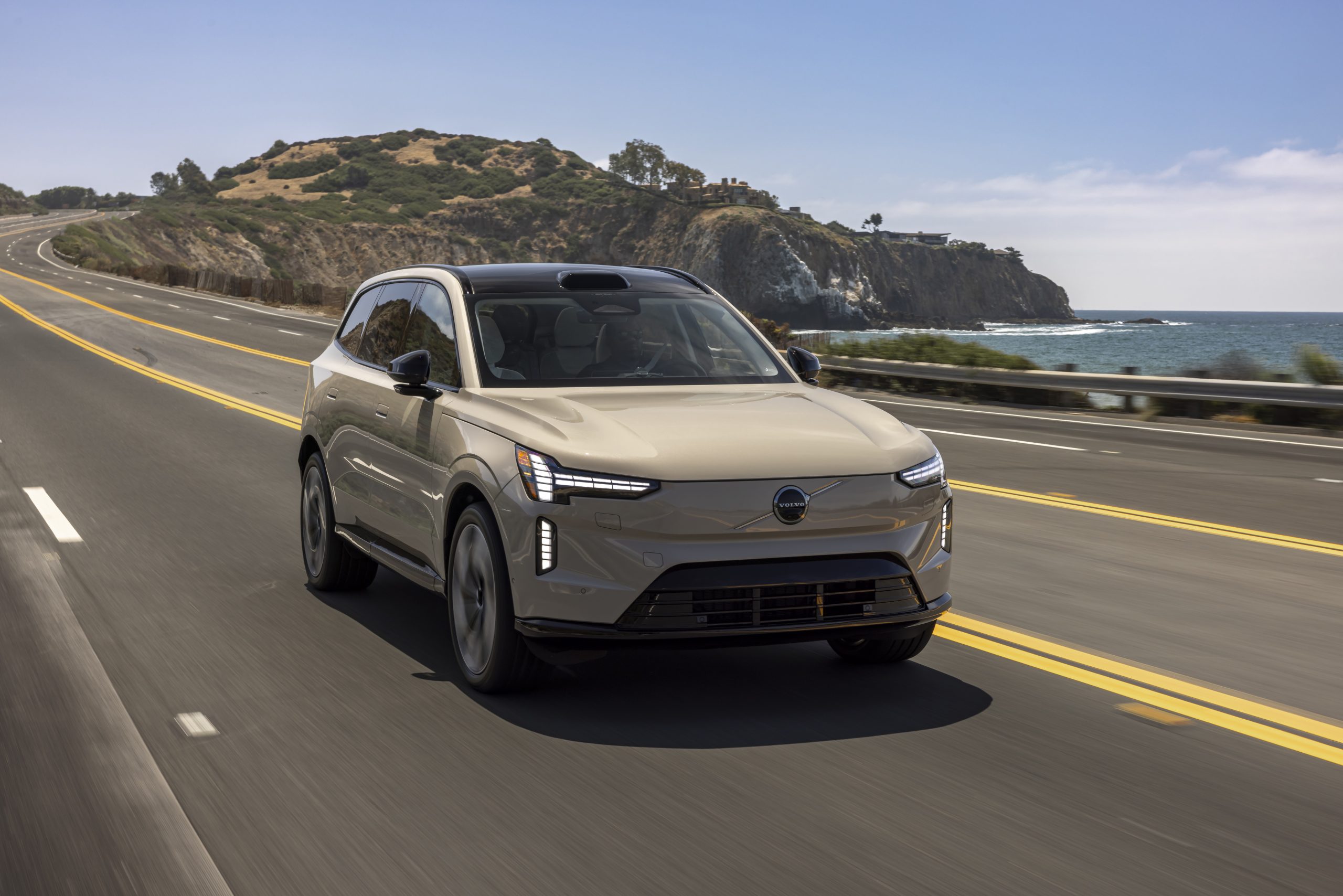Last week, I spent a few hours driving the 2025 Volvo EX90, a new three-row all-electric SUV, on a media trip in California. It was a muted, laid-back and subtle experience. The car looked simple, non-flashy, attractive and sensible—very Scandinavian. The interior featured warm gray cloth and recycled blond wood panels, which were backlit at night with a honeycomb pattern. The backseat looked like it might be a little cramped, but the EX90 could still seat seven. The version I drove, the Twin Motor base, has, per its name, two electric motors that generate 420 horsepower. A “Performance” model has more powerful motors that top out over 500 hp. And both still get more than 300 miles of electric range.
The drive experience was smooth, fast, quiet and pleasant. It handled beautifully on twisty mountain roads and when stuck in traffic, which we were a lot. The cabin’s muted exterior sounds to a marvelous degree, and even if it hadn’t, there is a 25-speaker Bowers and Wilkins sound system. If you play Dolby Atmos-compatible music, you might as well be in the front row of the Hollywood Bowl—the sound quality is that good.
And yet, I still have no idea what, exactly, I was sitting in during this experience.

Volvo says this EX90 is a “highly advanced computer on wheels.” On the one hand, this is what we’ve all been waiting for in these modern cars. If highly-advanced computer networks can power the rest of the world, then why not our vehicles? On the other hand, it gave the feeling of driving something that was fundamentally incomplete and subject to infinite chaotic whims.
The EX90 essentially contains two separate computers. The first one, powered by NVIDIA Drive AI platforms, is supposed to run all the systems inside the car, from safety features to infotainment and battery management. But there’s also a Google component, requiring Google Maps, Google Assistant and Google Play to operate key systems. Qualcomm has signed on to run major communication functions. And then there’s Luminar, represented by a noticeable roof bump on the front passenger’s side, to run the Lidar system that will, Volvo promises us, allow the car to drive itself sometime in the distant future.

This is less a vehicle than a kind of kitchen-sink super-team of new automotive technologies. It contains more cameras than a TV studio and more sensors than a bodysuit in front of a green screen, though I found myself unclear exactly as to what they all do, how they were supposed to work or if they were all active. In particular, the Lidar isn’t ready just yet. The Volvo team told us that engineers in Sweden were “working on it.” But what did that mean? And what else are they still working on?
Volvo informed us that there were two cameras focused on the driver at all times in order to indicate whether or not the driver was distracted, had their head turned the wrong way or was falling asleep. Point taken. At one point, my drive partner, with the Drive Assist turned on, removed his hands briefly from the wheel. The Volvo informed him that this was highly irregular, though that’s nothing that cars haven’t been doing for years. The only real test it passed came when I was attempting to turn on the driver’s assist and accidentally pressed the parking brake. The car would not permit me to do that. Point to the EX90.

These are the kinds of issues that modern cars face, and particularly the new electric ones, whose buyers allow some leeway for technological innovation. We don’t find ourselves fretting about a sluggish transmission or wonky steering or some sort of coolant leak. Instead, it’s “Will the Pilot Assist suddenly shut down because the car needs a software update?” or “What happens if the car decides it can’t read my digital key?”
Cars have always been unreliable to some extent, but we’ve now moved from having to deal with a weird sound when you brake to the automotive equivalent of having to watch the color wheel spin while you’re updating Adobe Acrobat. You hope that the vehicle will be better when it’s all over, but there’s no guarantee.

The EX90 is, on the surface, a lovely electric SUV. It looks and feels exactly like a car that Volvo lovers would want, and should be a smooth transition from the current generation of three-row gas-powered or hybrid Volvos. On the other hand, I can’t tell you exactly what you’d be getting if you spent the nearly $80,000 that the base model commands. Trusting your AI overlords is kind of the digital key to buying into the new Volvo system. Like they used to say about the weather when I lived in Chicago, “If you don’t like your current electric Volvo, wait a minute.”

